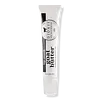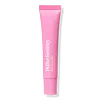What's inside
What's inside
 Key Ingredients
Key Ingredients

 Benefits
Benefits

 Concerns
Concerns

 Ingredients Side-by-side
Ingredients Side-by-side

Hydrogenated Polyisobutene
EmollientButyrospermum Parkii Butter
Skin ConditioningCopernicia Cerifera Wax
Dimer Dilinoleyl Dimer Dilinoleate
EmollientTriisostearin
Skin ConditioningEthylene/Propylene/Styrene Copolymer
Glycine Soja Oil
EmollientSimmondsia Chinensis Seed Oil
EmollientAroma
Ozokerite
Emulsion StabilisingOlea Europaea Fruit Oil
MaskingGoat Milk
Skin ConditioningRubus Idaeus Seed Oil
EmollientMoringa Oleifera Seed Oil
EmollientCaryocar Brasiliense Fruit Oil
Skin ConditioningVitis Vinifera Seed Oil
EmollientSilica
AbrasivePentaerythrityl Tetra-Di-T-Butyl Hydroxyhydrocinnamate
AntioxidantButylene/Ethylene/Styrene Copolymer
Hydrogenated Polyisobutene, Butyrospermum Parkii Butter, Copernicia Cerifera Wax, Dimer Dilinoleyl Dimer Dilinoleate, Triisostearin, Ethylene/Propylene/Styrene Copolymer, Glycine Soja Oil, Simmondsia Chinensis Seed Oil, Aroma, Ozokerite, Olea Europaea Fruit Oil, Goat Milk, Rubus Idaeus Seed Oil, Moringa Oleifera Seed Oil, Caryocar Brasiliense Fruit Oil, Vitis Vinifera Seed Oil, Silica, Pentaerythrityl Tetra-Di-T-Butyl Hydroxyhydrocinnamate, Butylene/Ethylene/Styrene Copolymer
Hydrogenated Polyisobutene
EmollientHelianthus Annuus Seed Oil
EmollientPolybutene
Ethylene/Propylene/Styrene Copolymer
Corylus Avellana Seed Oil
EmollientCaprylic/Capric Triglyceride
MaskingButylene/Ethylene/Styrene Copolymer
Bis-Diglyceryl Polyacyladipate-2
EmollientPentaerythrityl Tetraisostearate
EmollientPhenoxyethanol
PreservativeDiethylhexyl Syringylidenemalonate
Skin ProtectingAroma
Simmondsia Chinensis Seed Oil
EmollientSodium Saccharin
MaskingLimonene
PerfumingEthylhexylglycerin
Skin ConditioningPentaerythrityl Tetra-Di-T-Butyl Hydroxyhydrocinnamate
AntioxidantTocopheryl Acetate
AntioxidantGlycine Soja Oil
EmollientLinalool
PerfumingCitrus Aurantifolia Oil
CleansingCitral
PerfumingSambucus Nigra Flower Extract
RefreshingCitrus Aurantium Amara Flower Extract
RefreshingJasminum Officinale Flower Extract
MaskingPrunus Serrulata Flower Extract
Skin ConditioningLavandula Angustifolia Flower Extract
CleansingPaeonia Officinalis Flower Extract
TonicTocopherol
AntioxidantRosa Damascena Flower Oil
MaskingTitanium Dioxide
Cosmetic ColorantCI 73360
Cosmetic ColorantCI 15850
Cosmetic ColorantIron Oxides
Hydrogenated Polyisobutene, Helianthus Annuus Seed Oil, Polybutene, Ethylene/Propylene/Styrene Copolymer, Corylus Avellana Seed Oil, Caprylic/Capric Triglyceride, Butylene/Ethylene/Styrene Copolymer, Bis-Diglyceryl Polyacyladipate-2, Pentaerythrityl Tetraisostearate, Phenoxyethanol, Diethylhexyl Syringylidenemalonate, Aroma, Simmondsia Chinensis Seed Oil, Sodium Saccharin, Limonene, Ethylhexylglycerin, Pentaerythrityl Tetra-Di-T-Butyl Hydroxyhydrocinnamate, Tocopheryl Acetate, Glycine Soja Oil, Linalool, Citrus Aurantifolia Oil, Citral, Sambucus Nigra Flower Extract, Citrus Aurantium Amara Flower Extract, Jasminum Officinale Flower Extract, Prunus Serrulata Flower Extract, Lavandula Angustifolia Flower Extract, Paeonia Officinalis Flower Extract, Tocopherol, Rosa Damascena Flower Oil, Titanium Dioxide, CI 73360, CI 15850, Iron Oxides
Ingredients Explained
These ingredients are found in both products.
Ingredients higher up in an ingredient list are typically present in a larger amount.
Aroma refers to an ingredient, or mixture of ingredients, that impart or mask a flavor.
The name is slightly confusing. This is because INCI associates aroma with flavor instead of smell.
Here is the official definition from the The International Cosmetic Ingredient Dictionary and Handbook:
“Aroma is a term for ingredient labeling used to identify that a product contains a material or combination of materials normally added to a cosmetic to produce or to mask a particular flavor.”
INCI shows the only purpose of aroma to be "flavouring".
However, due to regulation differences, some companies may use aroma in place of parfum.
In Canada, this ingredient only has to be listed in concentrations above 1%.
Learn more about AromaWe don't have a description for Butylene/Ethylene/Styrene Copolymer yet.
We don't have a description for Ethylene/Propylene/Styrene Copolymer yet.
Glycine Soja Oil comes from the soybean. Glycine Soja is native to eastern Asia.
Soybean oil is an emollient. It is rich in antioxidants and fatty acids including palmitic, stearic, oleic, and linoleic acids.
As an emollient, the fatty acids in soybean oil helps keep your skin soft and hydrated. It does so by creating a film on top that traps moisture in.
Soybean oil is also rich in vitamin E, a potent antioxidant. Vitamin E is also anti-inflammatory and provides a soothing effect.
Studies show soy may help fade hyperpigmentation from UVB. It does so by disrupting the melanin process from UVB induced skin inflammation.
This ingredient may not be malassezia folliculitis, or fungal-acne, safe.
Soybeans are rich in proteins and are part of the legume family. Foods made with soybeans include tofu, soymilk, edamame, miso, and soy sauce.
Learn more about Glycine Soja OilHydrogenated Polyisobutene is a synthetic polymer. Polymers are compounds with high molecular weight. Hydrogenated Polyisobutene is an emollient and texture enhancer.
In one study, Hydrogenated Polyisobutene showed better skin hydration levels than Caprylic/Capric Triglyceride. As an emollient, it helps keep your skin soft and hydrated by trapping moisture in.
Hydrogenated Polyisobutene is often used as a mineral oil replacement.
Learn more about Hydrogenated PolyisobutenePentaerythrityl Tetra-Di-T-Butyl Hydroxyhydrocinnamate (long name, huh?) is a synthetic antioxidant.
It is used to help stabilize other antioxidants or prevent the color from changing in a product.
As an antioxidant, it helps fight free-radical molecules. Free-radical molecules are capable of damaging our cells and other genetic material. Thus, antioxidants may reduce the signs of aging.
This ingredient is oil-soluble.
Learn more about Pentaerythrityl Tetra-Di-T-Butyl HydroxyhydrocinnamateThis oil comes from the seeds of the desert shrub called Jojoba. It is more commonly known as jojoba oil, a non-comedogenic oil.
Jojoba oil does not contain fragrance and has many fatty-acids, making it a great soothing ingredient.
It also contains Vitamin E, a great moisturizing ingredient. Vitamin E is also an antioxidant and protects your skin against oxidative damage.
This ingredient humectant properties, meaning it helps draw moisture from the air. This helps keep your skin hydrated.
While jojoba has antibacterial properties, it is only able to kill some strains of bacteria.
Studies also show it helps in wound healing. In fact, Indigenous cultures have used jojoba as a moisturizer and to help treat burns for centuries.
Fun fact: Jojoba oil similar to natural human skin sebum, so it has a great effect on dry skin. It is also promising with helping to regulate sebum production.
Due to its fatty acid content, Jojoba oil may not be fungal acne safe. We recommend speaking with a professional if you have any concerns.
Learn more about Simmondsia Chinensis Seed Oil